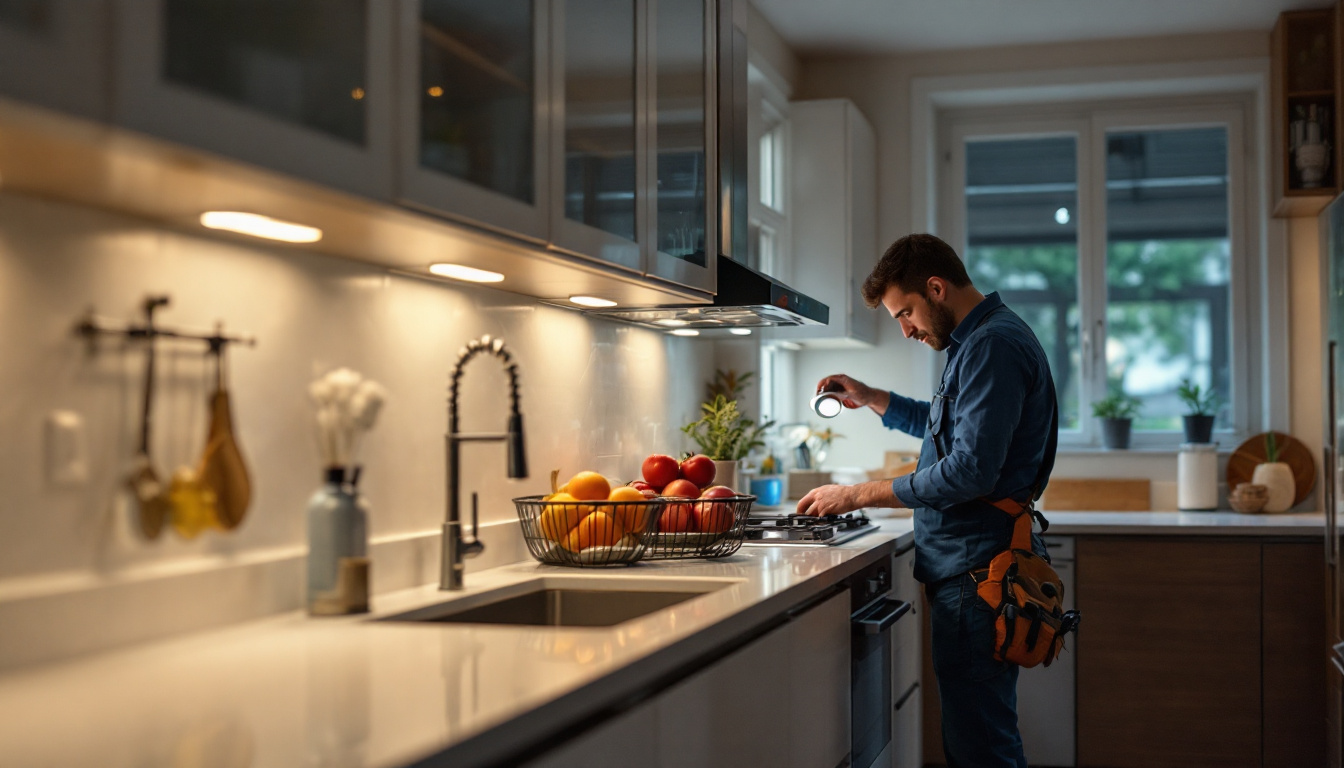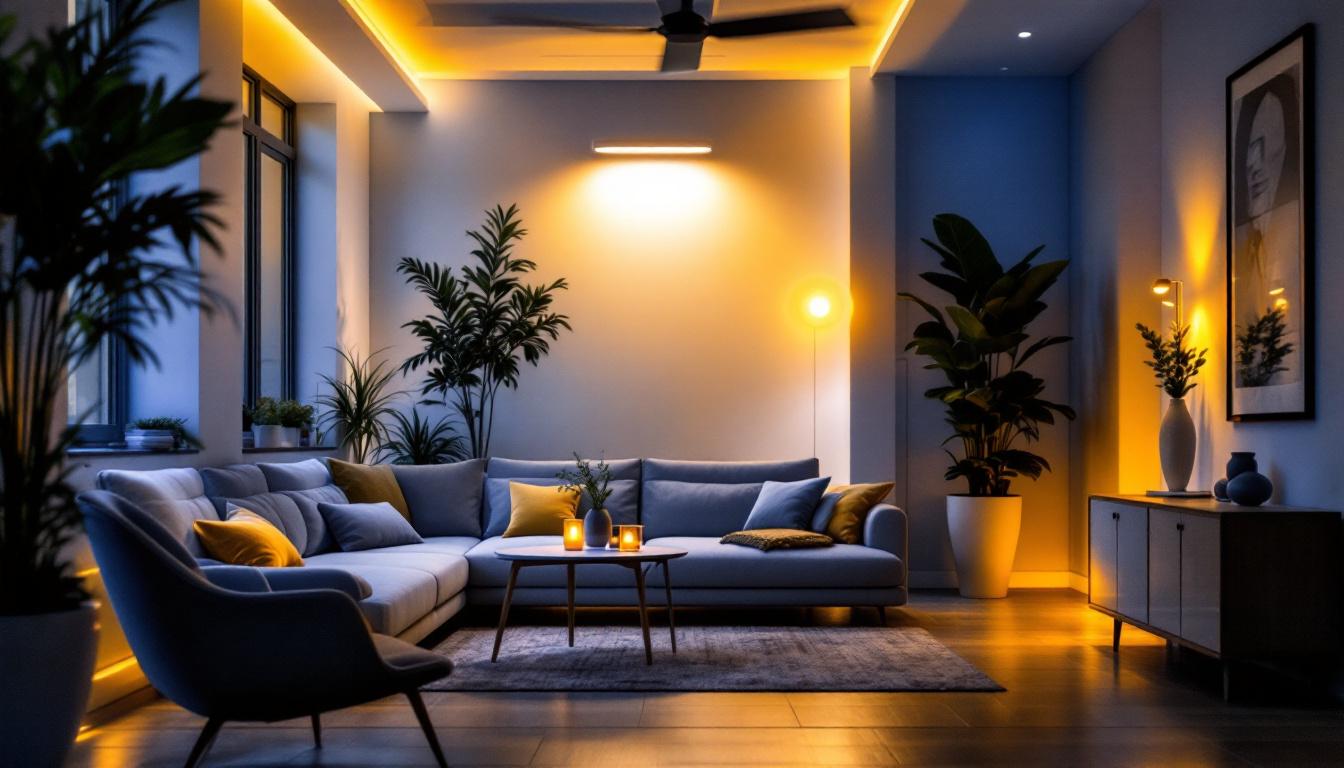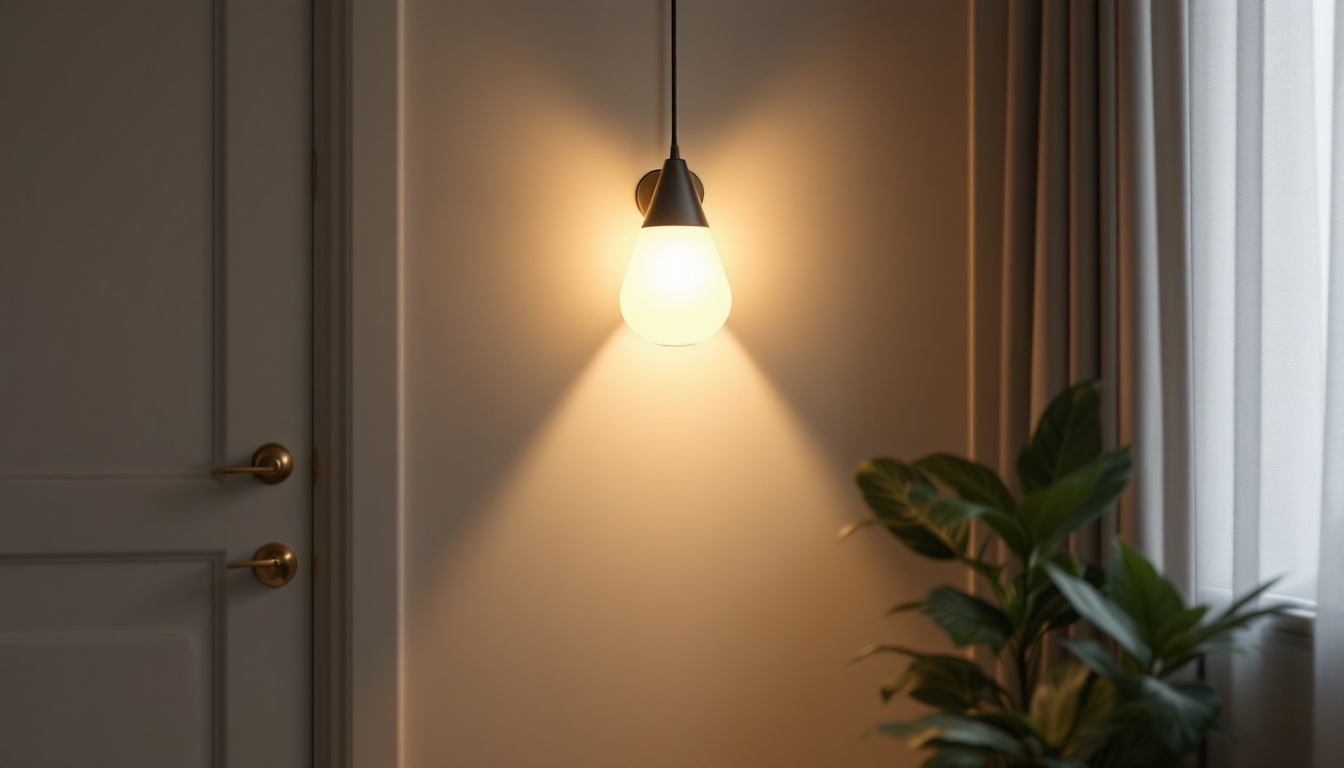
Lighting plays a crucial role in enhancing the functionality and aesthetics of any space, particularly in kitchens and work areas. under cabinet LED lights have gained immense popularity among homeowners and contractors alike due to their efficiency and versatility. However, like any installation, they come with their own set of challenges. This article aims to provide lighting contractors with insights on how to avoid common issues associated with under cabinet LED lighting installations.
Under cabinet LED lights are fixtures installed beneath cabinets, typically in kitchens, to illuminate countertops and workspaces. They offer several advantages, including energy efficiency, long lifespan, and a range of color temperatures. However, improper installation can lead to various problems that may affect both functionality and aesthetics.
There are several types of under cabinet LED lights available, each with its own unique characteristics. The most common types include strip lights, puck lights, and linear fixtures. Strip lights are flexible and can be cut to fit specific lengths, making them ideal for custom installations. Puck lights, on the other hand, are small, round fixtures that provide focused lighting and can be spaced out for even illumination. Linear fixtures offer a sleek, modern look and are often used in contemporary designs.
Understanding the differences between these types is essential for contractors, as it influences the installation process, the required electrical work, and the overall design aesthetic. Selecting the right type based on the client’s needs can help avoid future issues. For example, in a small kitchen where space is at a premium, strip lights can be an excellent choice as they can be easily hidden and tailored to fit snugly beneath cabinets. Conversely, in larger spaces where more light is required, a combination of puck and linear fixtures can create a layered lighting effect, enhancing both functionality and visual appeal.
LED lights are renowned for their energy efficiency, consuming significantly less power than traditional incandescent bulbs. This not only reduces electricity bills but also minimizes the frequency of bulb replacements due to their long lifespan. Additionally, LEDs generate less heat, making them safer for use in confined spaces like under cabinets.
Moreover, LEDs offer a variety of color temperatures, allowing contractors to customize the ambiance of a space. From warm whites that create a cozy atmosphere to cool whites that enhance visibility, the versatility of LED lighting can cater to diverse client preferences. This adaptability can also extend to smart LED options, which allow users to control brightness and color temperature through mobile apps or voice commands. Such features can elevate the user experience, making it easier to set the perfect mood for cooking, entertaining, or simply relaxing in the kitchen.
Furthermore, the environmental impact of using LED lights cannot be overlooked. With their lower energy consumption, they contribute to a reduction in carbon footprint, making them an eco-friendly choice for homeowners who are conscious of sustainability. As more individuals seek to create energy-efficient homes, the demand for under cabinet LED lighting continues to rise, encouraging manufacturers to innovate and offer even more advanced solutions that blend functionality with design.
While under cabinet LED lights are a fantastic addition to any kitchen or workspace, several common installation issues can arise. Awareness of these challenges allows contractors to take proactive measures to avoid them.
One of the most significant issues contractors face is ensuring electrical compatibility. Not all LED fixtures are designed to work with existing wiring systems. Some may require a specific voltage or transformer, while others may not be dimmable with standard dimmer switches.
To avoid compatibility issues, it is crucial to assess the existing electrical setup before installation. Contractors should verify the voltage requirements of the LED fixtures and ensure that the circuit can handle the load. Additionally, using compatible dimmers can enhance the functionality and flexibility of the lighting system. It is also advisable to consult the manufacturer’s specifications and guidelines, as they often provide vital information regarding compatibility with various electrical setups. This diligence can prevent costly rework and ensure a smooth installation process.
Another common issue is the improper placement of under cabinet lights. Incorrect positioning can lead to uneven lighting, shadows, and glare, which can detract from the overall aesthetic and functionality of the space.
To ensure proper placement, contractors should consider the height of the cabinets, the size of the countertop, and the intended use of the space. A well-thought-out layout can enhance task lighting while also creating a visually appealing environment. Utilizing a laser level during installation can help achieve precise alignment. Furthermore, it is beneficial to conduct a test run of the lighting before finalizing the installation. This allows for adjustments to be made based on the actual light output and how it interacts with the surrounding surfaces, ensuring that the lighting meets the specific needs of the user.
Although LEDs generate less heat than traditional bulbs, they can still produce some warmth, especially when installed in enclosed spaces. Inadequate ventilation can lead to overheating, which may shorten the lifespan of the fixtures and affect their performance.
To mitigate heat management issues, contractors should ensure that there is adequate airflow around the fixtures. This may involve leaving space between the fixture and the cabinet or using fixtures designed for enclosed spaces. Additionally, selecting high-quality LED products that are designed for longevity can help prevent overheating problems. It’s also worth considering the installation of temperature sensors or thermal cut-off switches that can automatically turn off the lights if they reach a certain temperature, providing an extra layer of safety and reliability. By prioritizing heat management, contractors can enhance the durability and efficiency of the lighting system, ensuring that it remains a valuable asset in the kitchen or workspace for years to come.
To ensure a successful installation of under cabinet LED lights, contractors should adhere to several best practices. These guidelines can help eliminate common issues and enhance the overall quality of the installation.
Before beginning the installation, thorough planning and design are essential. Contractors should discuss the client’s needs and preferences, taking into account the layout of the kitchen and the intended use of the space. Creating a lighting plan that outlines fixture placement, wiring, and control options can streamline the installation process.
Additionally, considering the color temperature and brightness of the LEDs can significantly impact the final outcome. A well-designed lighting plan will not only enhance functionality but also elevate the aesthetic appeal of the space.
Investing in high-quality LED products is vital for a successful installation. Low-quality fixtures may lead to a host of issues, including flickering, color inconsistencies, and reduced lifespan. Contractors should source products from reputable manufacturers that offer warranties and certifications.
Furthermore, using compatible accessories, such as dimmers and transformers, can enhance the performance of the lighting system. Quality products not only ensure better performance but also reflect positively on the contractor’s reputation.
Before completing the installation, it is crucial to test the lighting system. This includes checking for proper functionality, ensuring that all fixtures are working correctly, and verifying that the desired brightness and color temperature are achieved. Testing can help identify any issues that may need to be addressed before the project is finalized.
Additionally, contractors should educate clients on the operation of the lighting system, including how to use dimmers or smart controls if applicable. This ensures that clients are satisfied with the final product and reduces the likelihood of future complaints.
Even with proper installation, maintenance and troubleshooting may be necessary over time. Understanding common issues and how to address them can help contractors provide ongoing support to their clients.
Regular maintenance is essential for the longevity and performance of under cabinet LED lights. Contractors should recommend that clients periodically clean the fixtures to remove dust and debris that can accumulate over time. This can help maintain optimal brightness and prevent overheating.
Additionally, checking for any signs of wear or damage, such as flickering lights or discoloration, can help identify potential issues early. Encouraging clients to report any problems promptly can facilitate timely repairs and ensure the lighting system remains in peak condition.
In the event of issues such as flickering lights or complete outages, contractors should be prepared to troubleshoot effectively. Common causes of flickering may include loose connections, incompatible dimmers, or faulty fixtures. Ensuring that all connections are secure and that the fixtures are compatible with the existing system can often resolve these issues.
If a fixture is not working at all, checking the power supply and replacing any blown fuses or tripped breakers can be the first step. If problems persist, it may be necessary to replace the fixture or consult the manufacturer for further assistance.
Under cabinet LED lights offer a fantastic opportunity for lighting contractors to enhance the functionality and aesthetics of their clients’ spaces. However, understanding the potential issues and implementing best practices during installation can significantly reduce complications.
By focusing on proper planning, utilizing quality products, and maintaining open communication with clients, contractors can ensure successful installations that meet client expectations. With the right approach, under cabinet LED lighting can transform kitchens and workspaces into beautifully illuminated areas that are both practical and inviting.
Ready to elevate your lighting installations with the best under cabinet LED lights on the market? Look no further than LumenWholesale, where we provide contractors with spec-grade lighting products at unbeatable wholesale prices. Our commitment to quality and affordability means you can deliver exceptional lighting solutions to your clients without the burden of inflated costs. With our extensive selection, free shipping on bulk orders, and no hidden fees, you can trust that you’re getting the highest performance lighting at the best value. Transform your projects with the efficiency and convenience of Wholesale Lighting at the Best Value today.

Discover the key features and benefits of the Linear LED Pendant Light Fixture Shell, a must-have for lighting contractors.

Discover the often-overlooked details about 6-inch LED can lights that every lighting contractor should know.

Discover the ultimate guide to corner light fixtures with our essential checklist tailored for lighting professionals.

Discover expert strategies for lighting contractors to tackle common challenges with outdoor motion sensor lights.